The Hidden Artistic Side Of Gongju, Korea: The Yugu Mural Village
Last Updated on October 1, 2023
Finding hidden artistic wonders is a talent of mine I’d say and boy do I love when I find a spot that’s worth the hunt. The Yugu Mural Village (유구벽화마을) in Gongju, Korea is one of those places that is off the beaten path in Korea but oh so fun to find. Not only are there artistic things to see, but it tells a story about the village and the past and it’s centered around a local market so there is some good food too.
Looking for a weekend away from Seoul? Head to Gongju in Chungcheongnam-do for some beautiful things to see.
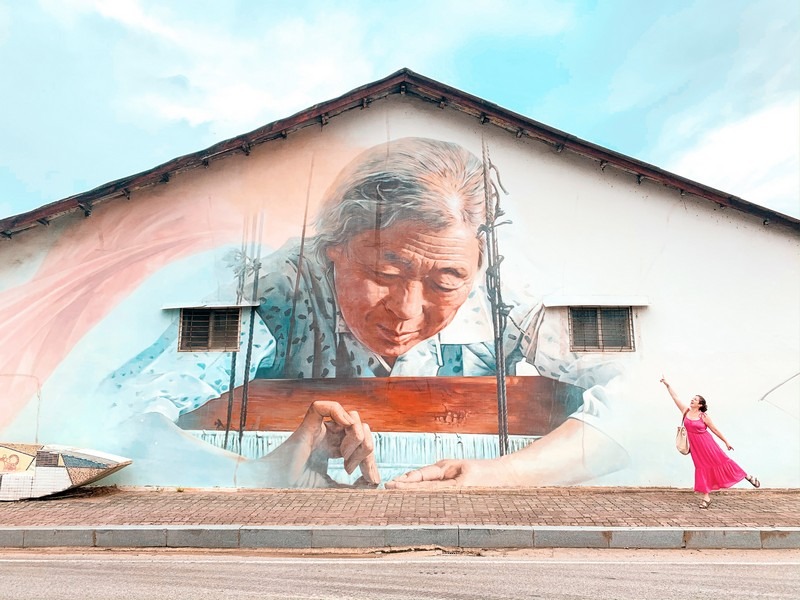
Here’s all of the information you need to plan your trip!
- How To Get To Yugu Mural Village
- Where To Stay In Gongju
- What To Know About The Yugu Mural Village
- What To See In The Yugu Mural Village
Gongju Itinerary
How To Get To Yugu Mural Village
Address: 257-5 Seongnam-ri, Yugu-eub, Gongju-si, Chungcheongnam-do (충청남도 공주시 유구읍 성남리 257-5)
By Public Transportation: Take a bus from Seoul’s Nambu Bus Terminal to Yugu Bus Terminal. The trip takes 2 hours and is around W11,000+ depending what kind of bus you take. The bus terminal is RIGHT ON the mural street so it’s literally a direct trip.
Where To Stay In Gongju
Gongju has a great traditional village and fortress wall and other traditional sites all together which is great for tourists. Unfortunately, the mural village is outside of this area, but if you’re planning on going to Gongju for the weekend, stay in the more traditional and historical area so you have more to see nearby where you stay.
One of the places we visited in the area that is also outstanding is the Yeonmisan Nature Art Park (연미산자연미술공원). From the mural village, you can take bus 700 to the traditional downtown area. The bus takes about an hour and 15 minutes and you’ll get off at Sanseong-dong. To be honest, it’s a bit of a ride. If you get a taxi, it’s just 20 minutes. Choose what you will.
Gongju Honghuiguan Guesthouse
This guest house is a beautiful traditional Hanok style with the floor sleeping and is right across the street from the Gongju Gongsanseong Fortress (공주 공산성). It’s a great location near some of the sites and some great restaurants too.
Book a room at Gongju Honghuiguan Guesthouse on Agoda.
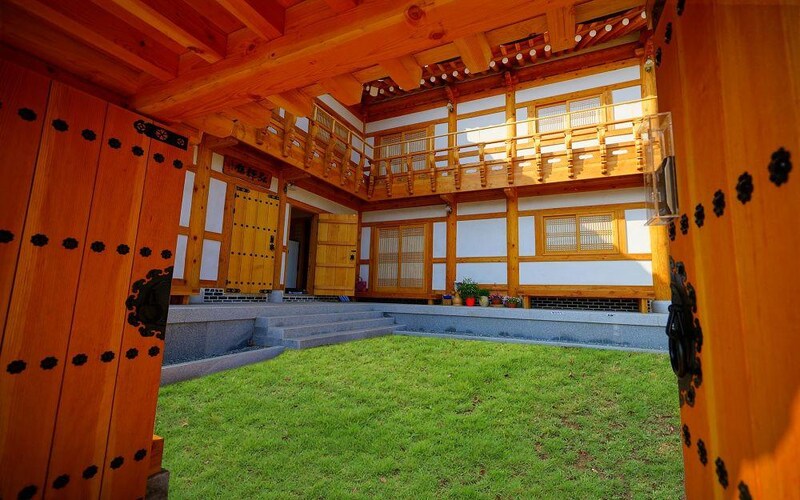
Gongju Moonlight Garden House
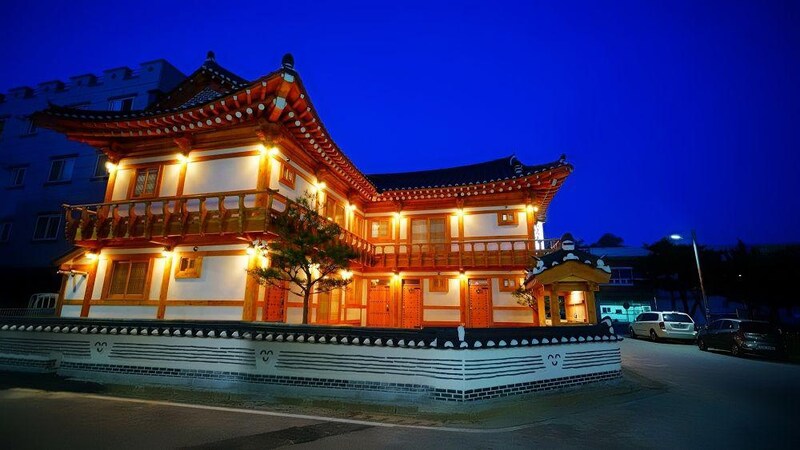
Another nice option in the area is the Gongju Moonlight Garden House. Similarly, the traditional Hanok style stay has floor sleeping options available and is near restaurants that serve local favorites as well as the fortress to explore by day after the art park.
Book a room at Gongju Moonlight Garden House on Agoda.
What To Know About The Yugu Mural Village
While Gongju may not be very famous anymore, at least not as well-known as it used to be, it has a rather illustrious history. It was once the capital of the Beakje Kingdom. At the time its name was Ungjin and was the capital from AD475 to AD538. Gongju was an important center until the kingdom’s fall in 660.
Recently in history it was where refugees from North Pyongan Province and Hwanghae Pronvince fled during the Korean War to manufacture textiles. The textile industry boomed here in the 1970s and had a reputation for being the only place in Korea where jacquard fabric could be produced. At it’s peak, the area had 250 factories, 3,000 looms and 3,000 crafts people.
Unfortunately, the area went through a major decline due to the IMF and the textile industry gradually collapsed because of low-cost products coming in from China. While the production of the past is no longer, the local governments, looking to promote tourism and regeneration to the area have done a number of projects including creating the Yugu Mural Village.
Under the slogan “kumsumandang” or “everything is full and satisfactory as if embroidered on silk”, the mural village project was started in 2014. The works were chosen to reveal the history of the area and decorate it too.

What To See In The Yugu Mural Village
You can start from anywhere, but we started near the traditional market since that’s where the parking lot is. This market is actually centrally located in the route for the murals so you’ll sort of make a loop around from the market if you’re starting there like we did.
There are murals and mosaic installations that line the main road as well as the alleys that connect the main road to a smaller road on the other side of the market so you’ll want to weave in and around to see everything. This beautiful peachy pink alley leads down to a minty one and finds the other street with mosaics depicting historic greats.
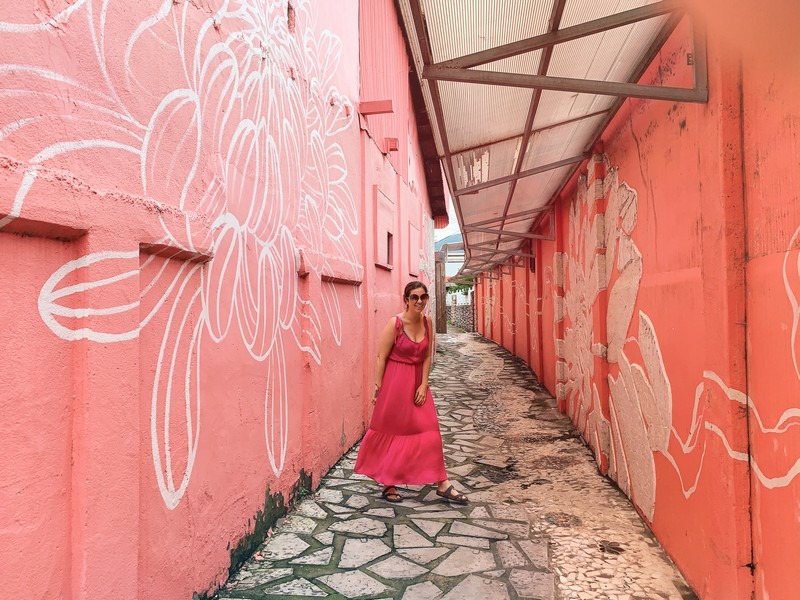
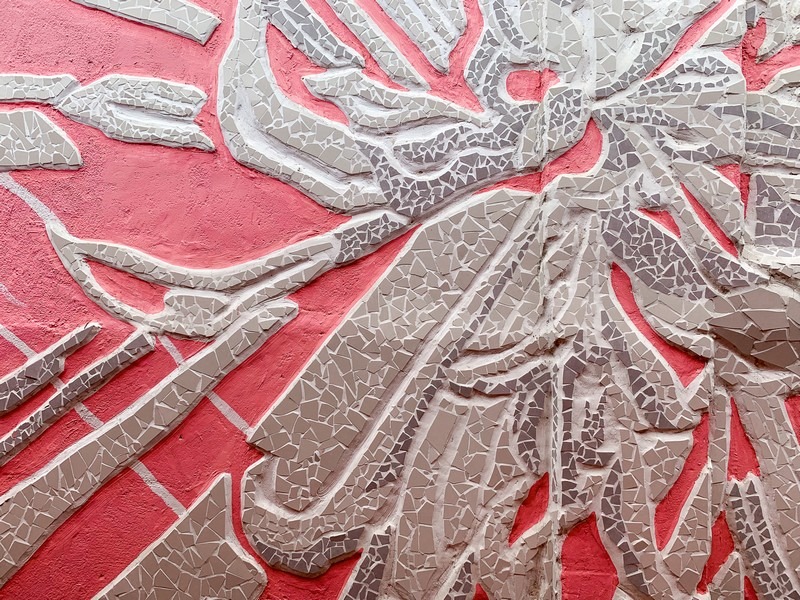
I really loved that this mural village had mosaics. It’s different from the other mural villages I’ve visited and might be a bit easier with upkeep for the locals so hopefully the artistic works will stay up for even longer for people to enjoy. There’s a map at the northern end of the mural village where the streets end at the main road so you can find it if you want to see where they are all located.

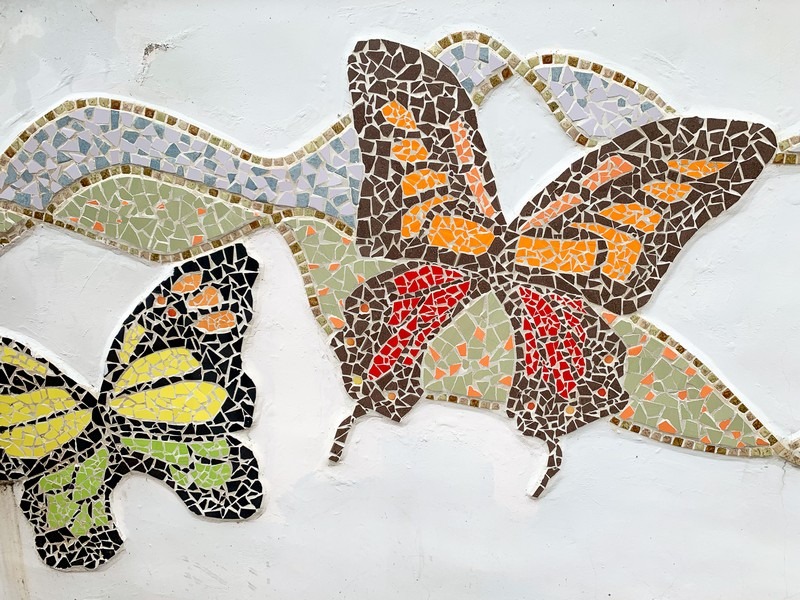
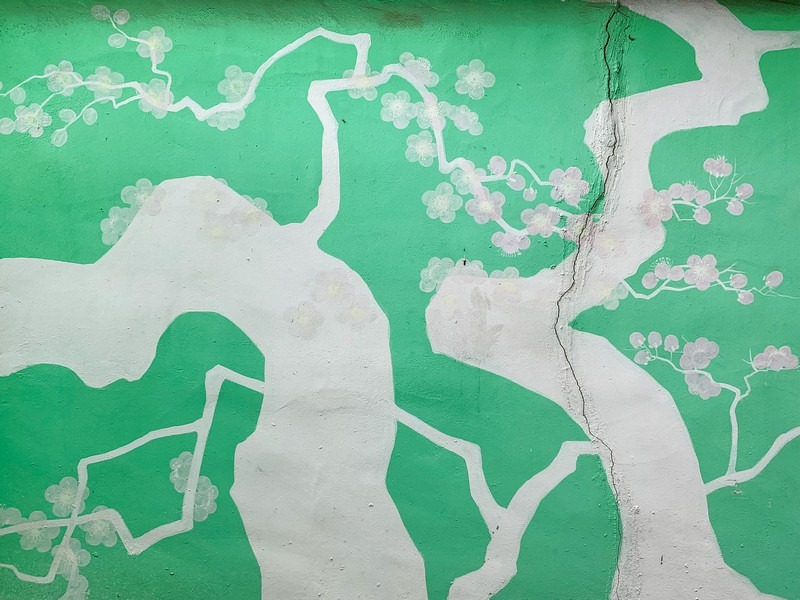
We really enjoyed the murals on Jungang 2-gil that depict the history of the textile industry. They’re vivid and beautiful. If you love murals or artistic villages, here are a few more in Korea that you can… well should go and find.
- The Ihwa Mural Village in Seoul
- The Huinnyeoul Culture Village in Busan
- The Ant Village In Seoul
- Mullae-dong Street Art Neighborhood In Seoul
- The Hamchang Art Road In Sangju
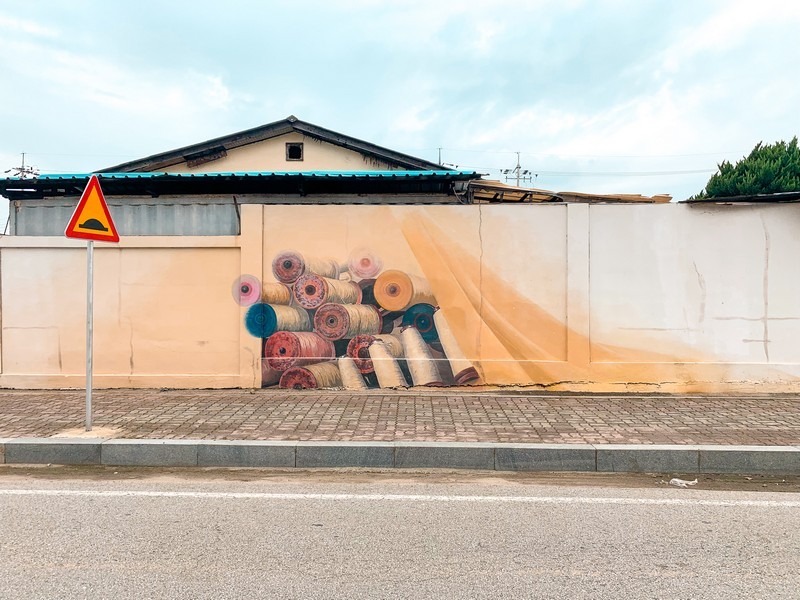
As you weave through, you’ll also spot the Yugu Textile History Exhibition hall which is where you can learn about the local history with textile production. If you have kids, this is a great educational spot to talk more about the weaving and see the old machines for weaving. There is a great exhibition space inside where kids can touch the textiles to understand what was once there.
If you’re interested in fabrics, it’s also really interesting to see the jacquard machines that were the only ones able to produce the material in Korea at that time.

Yugu Textile History Museum (유구섬유역사전시관)
- Address: 50 Sijang-gil, Yugu-eub, Gongju-si, Chungcheongnam-do (충남 공주시 유구읍 시장길 50)
- Hours: Tuesday – Sunday: 10:00am ~ 6:00pm (CLOSED Mondays & Public Holidays)
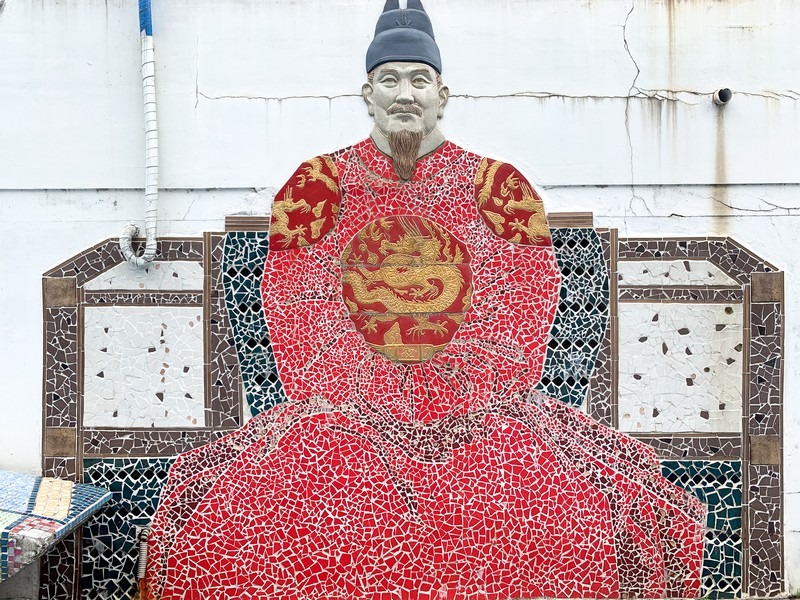


There are numerous restaurants in the surrounding streets since it’s near the local market so if you plan to have lunch or dinner in the area, you should have no problem finding something. The locals were friendly and actually seemed quite surprised that we’d come all the way from Seoul to see the mural village. It didn’t seem like an “all the way” kind of trek, but I don’t think they get a ton of tourists… maybe just not a lot of foreign tourists. It made for a fun trip that’s for sure though.



Did you like this post? Pin It!
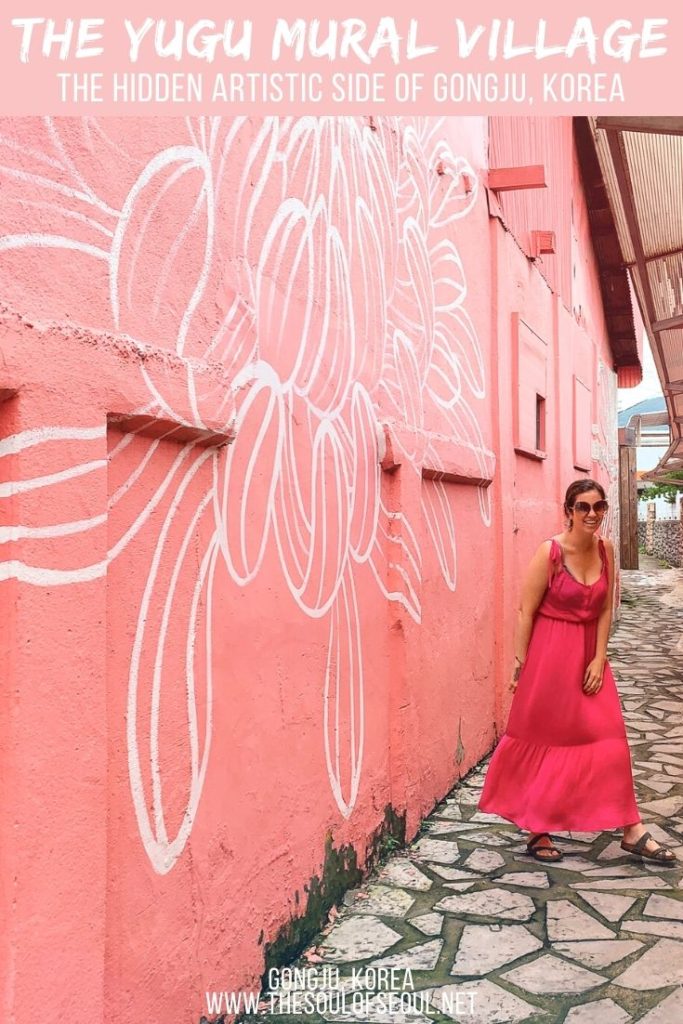
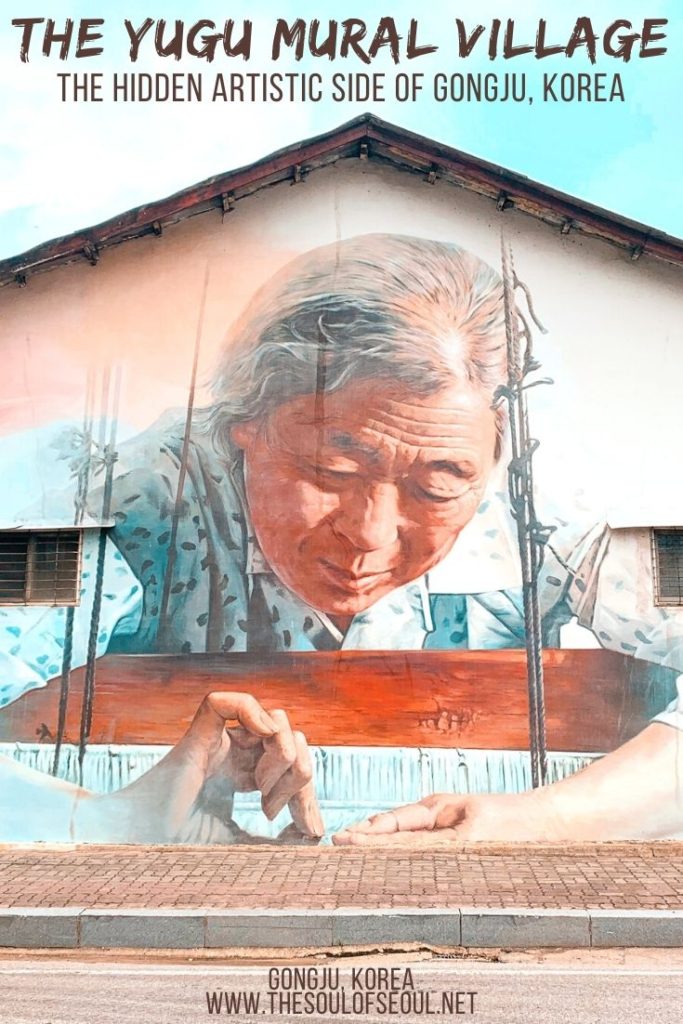

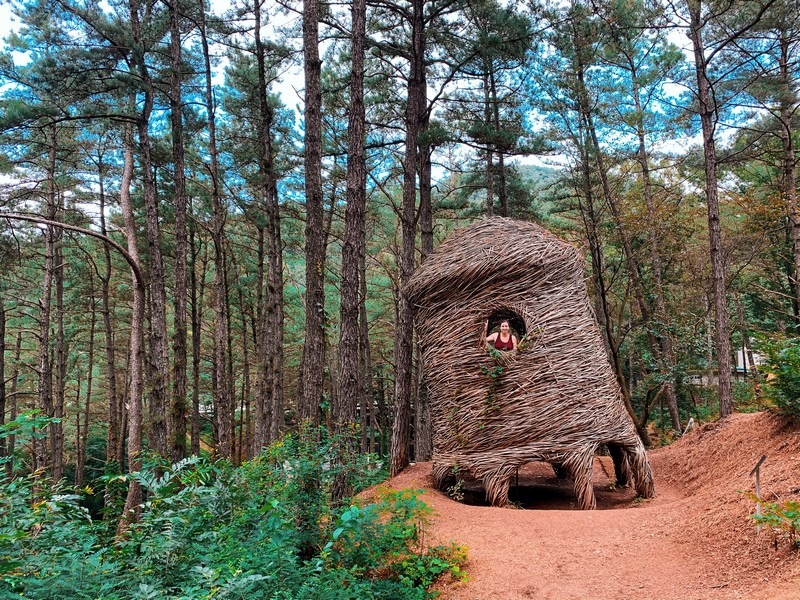
One Comment
CHRIS
I lived in Yugu from October 2005 to October 2006. The only Westerners in Yugu were me (at one school -hagwon -for kids) and my buddy Josh (at the only other hagwon for kids, down the min street from mine). There were other Westerners the whole year we arrived. I could go on and on but nice to see something new and innovative there in your pics.